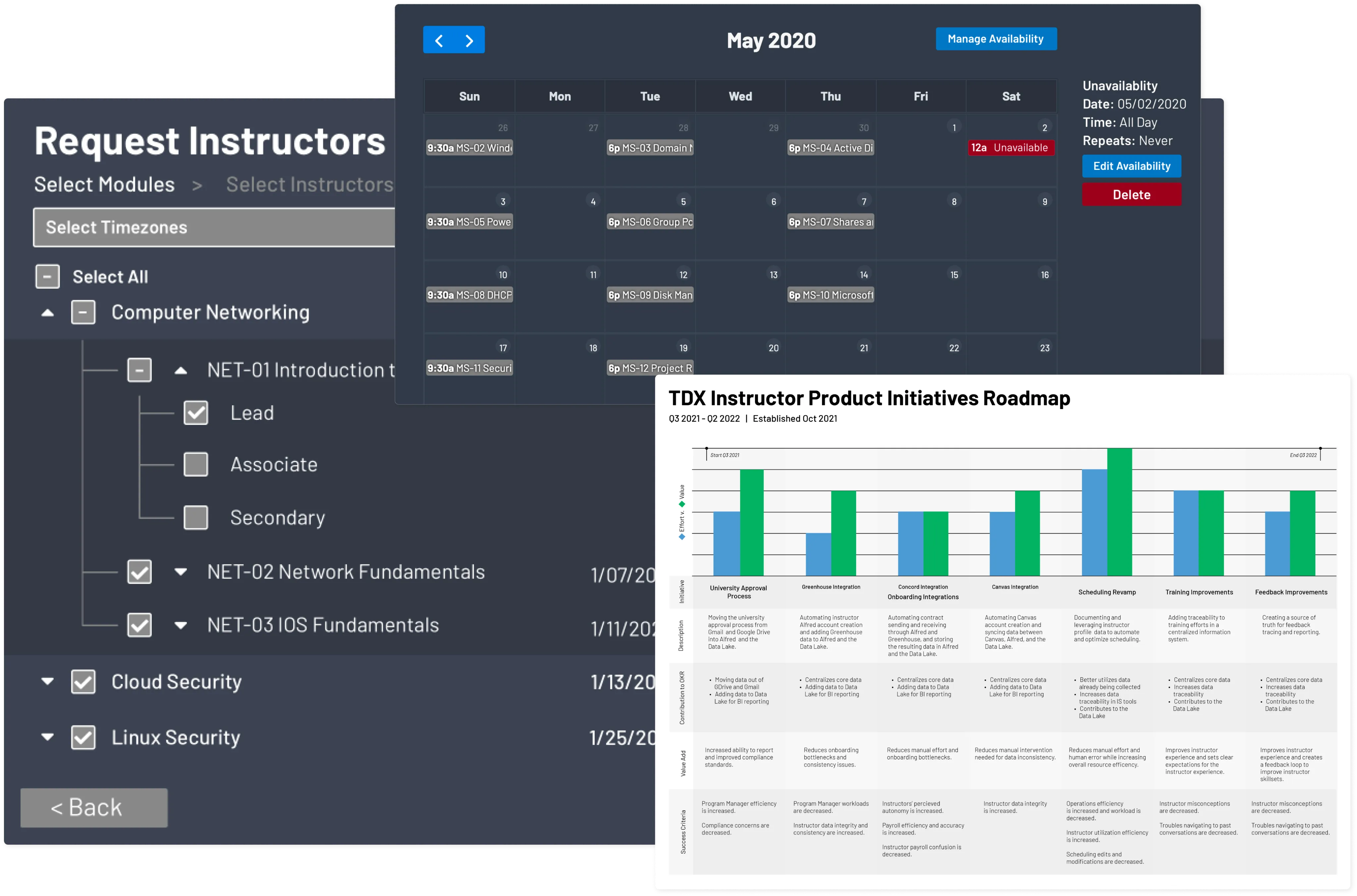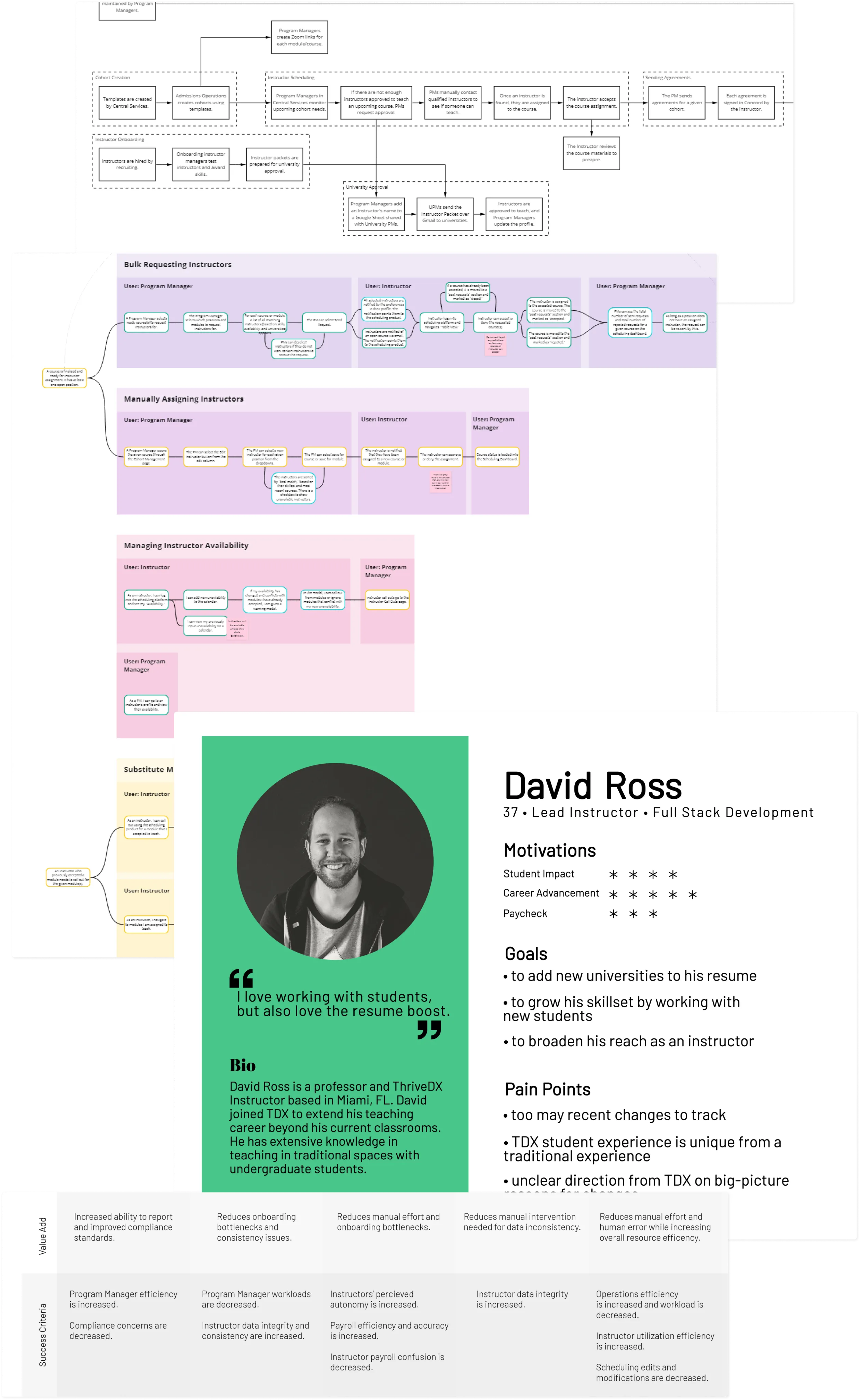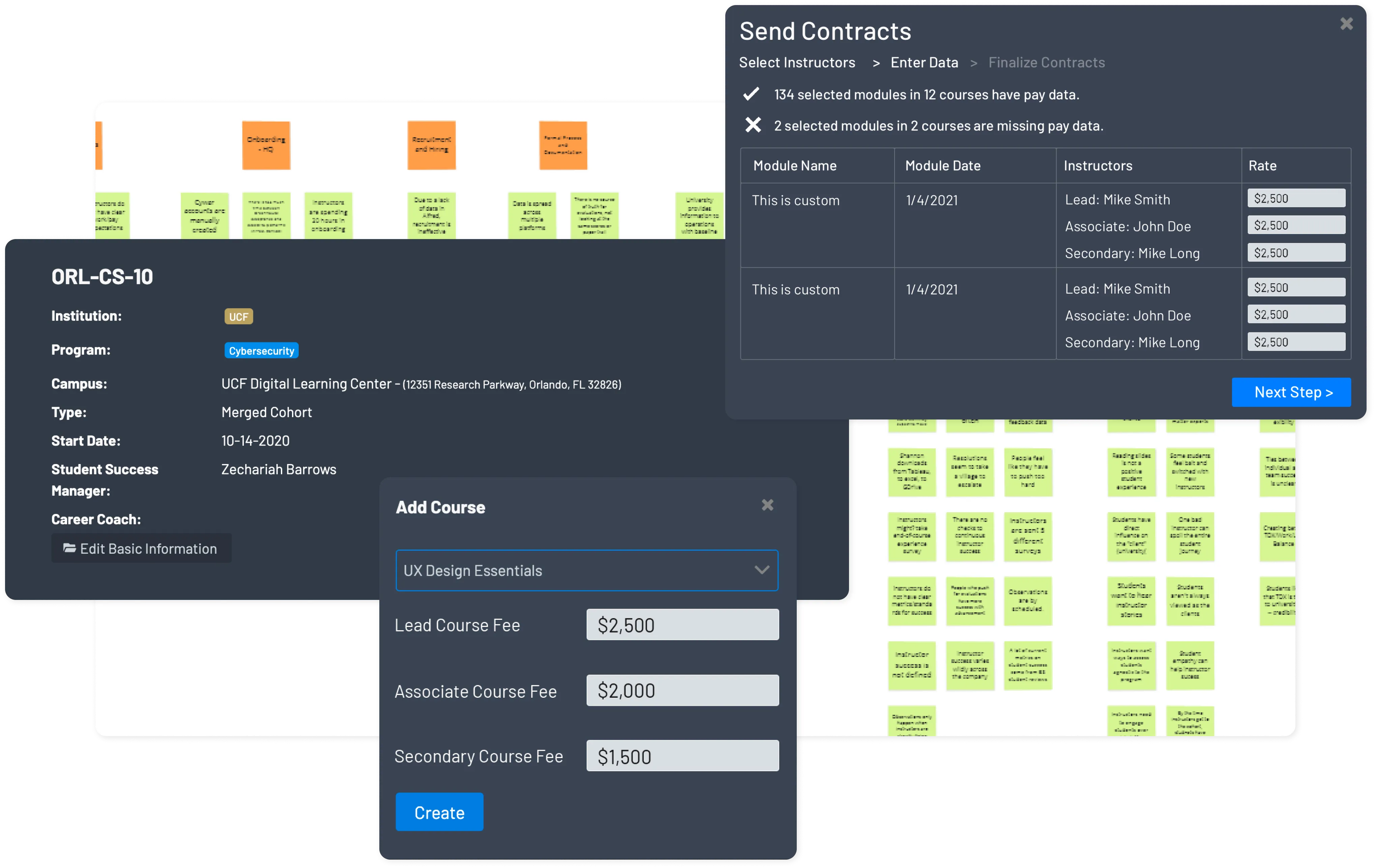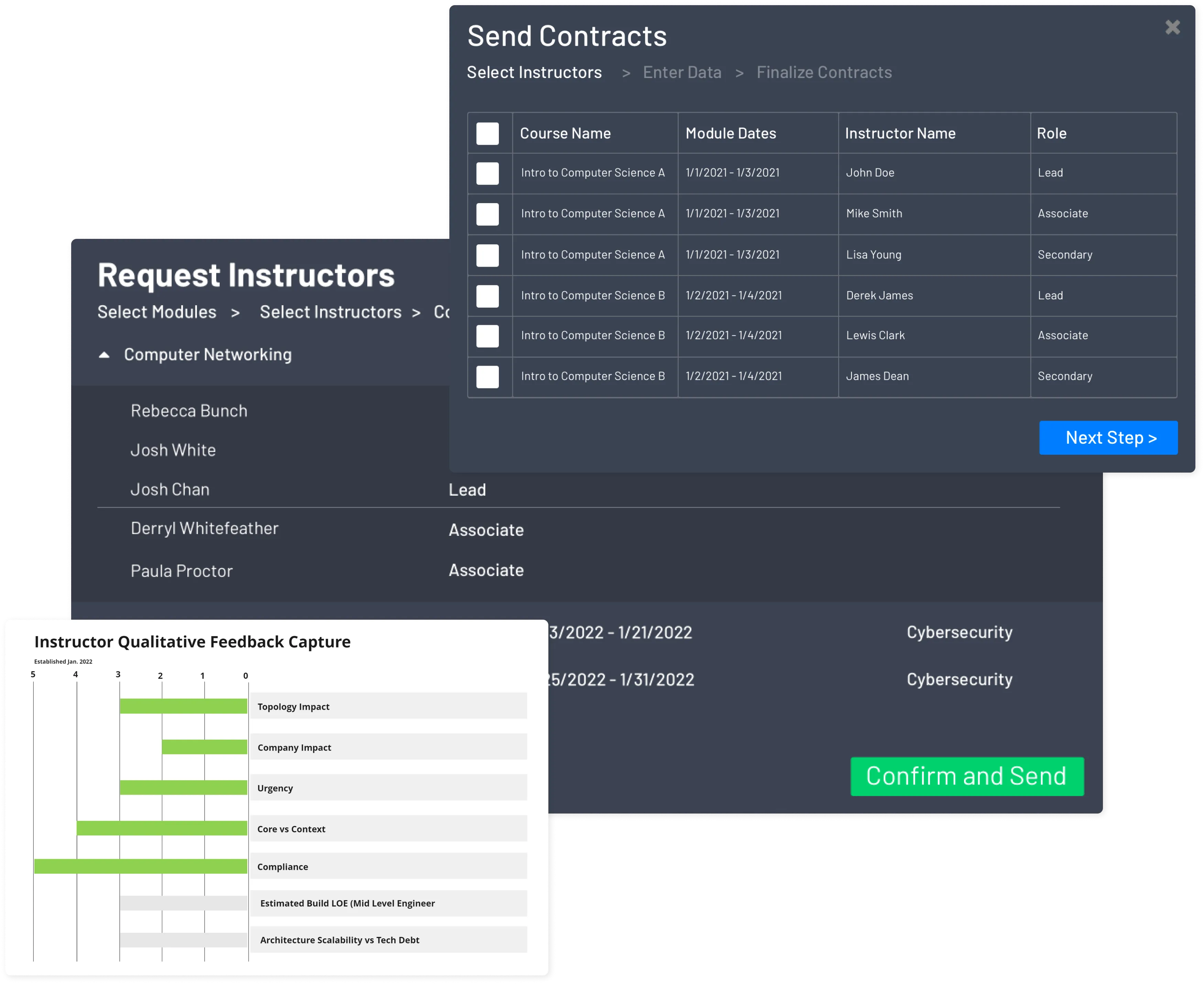
ThriveDX
I served as the product manager of instruction, using storytelling and data-driven decision-making to help place over one million students in careers by 2030.

Project highlights
Launched a product that resulted in a 10% decrease in the company's highest expense
Hosted workshops and created strategies to collaborate with, coach, and educate other product managers
Created a quantitative framework to evaluate instructor success and its ties to student learning outcomes

Discover the Product
At a growth-stage startup like ThriveDX, it's easy to fall into the build trap. I could have never looked at our data, spoken to our users, or collaborated with my stakeholders, and I'd still have a roadmap for the next few years. That's how teams end up building for building's sake -- a strategy that doesn't result in product-market fit. To fight this, I centered my work around defining KPIs, measuring iteratively, and prioritizing outcomes over outputs. I used data storytelling to share my insights with my stakeholders, collecting additional feedback and context, then returning to my discovery pipelines to apply and iterate again.
Tools Used




When I first joined ThriveDX, I was part of a shared engineering squad and split resources with 2-3 other product managers that owned separate customer topologies. This meant constantly stack-ranking my priorities against others -- a process that felt a little bit like comparing apples and oranges, but in our scrum cycle, I did so at least every two weeks. To get our work over the finish line, I took on an immense amount of cross-functional stakeholder management to protect my team from outside requests and distractions. I communicated with leadership, on behalf of my teams, the what-why-when of everything we did while collaborating to build my topology's first dedicated product squad.
Tools Used




Deliver the Results
Working in an experience-based topology meant that I delivered a wide range of products. I was responsible for the product experience of our instructors, their surrounding operations teams, and the resulting student experience both in a classroom and through the curriculum design. My deliverables ranged anywhere from internal product tooling, to high-budget software procurement, to serving on panels for innovation in student learning. All my projects shared a few common traits, regardless of their form: everything is measured, and everything helps to place more students in better careers.
Tools Used


